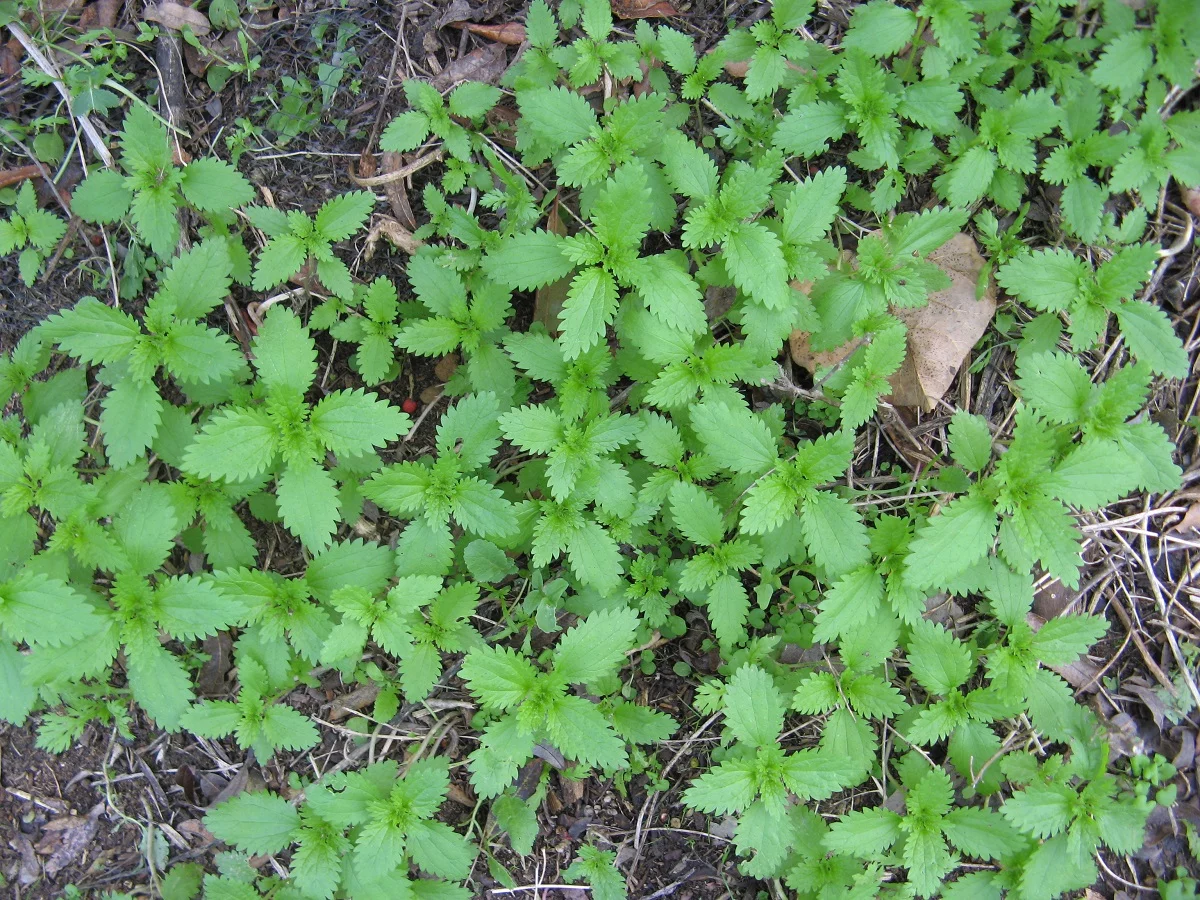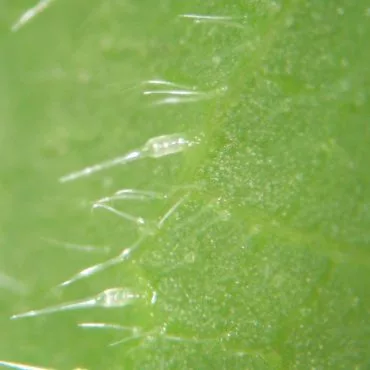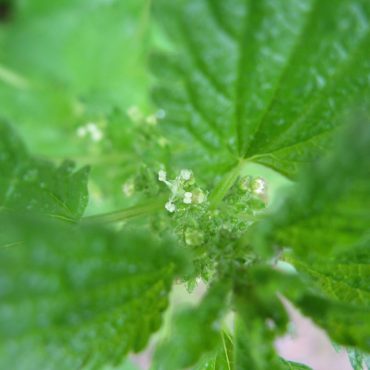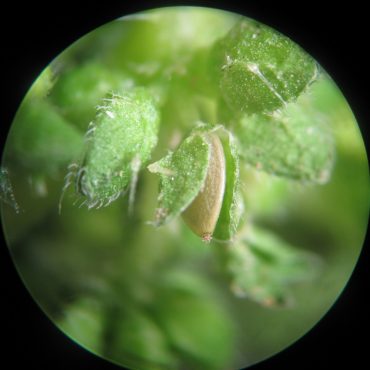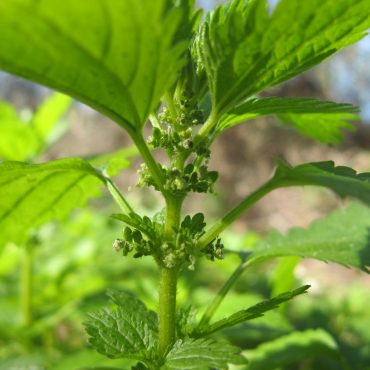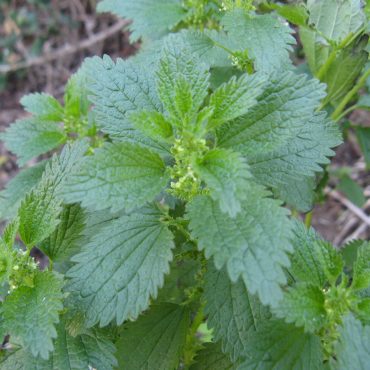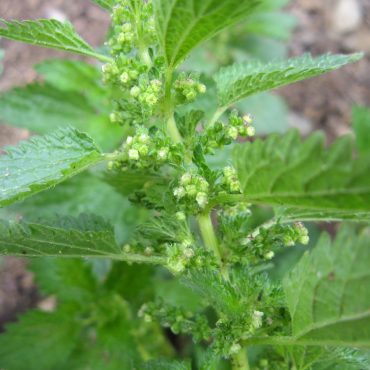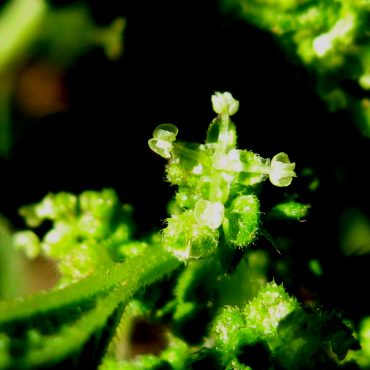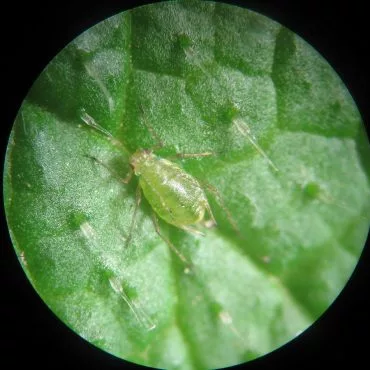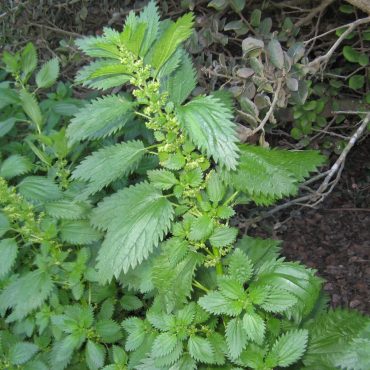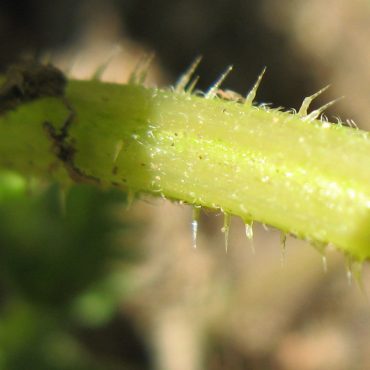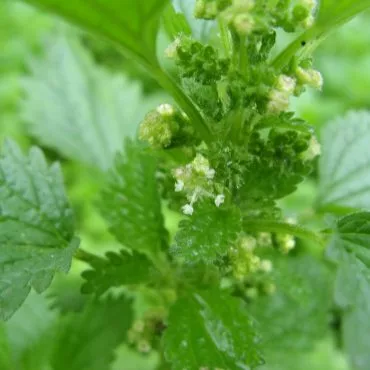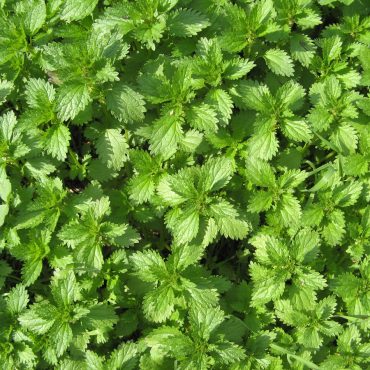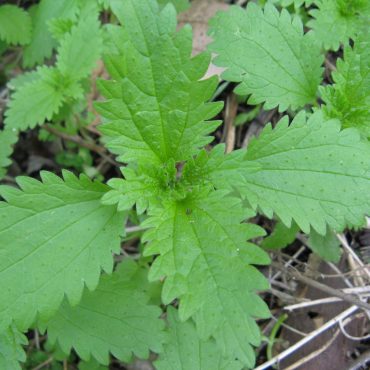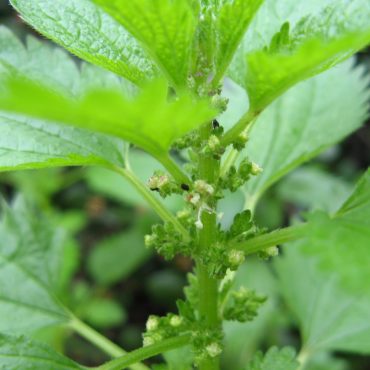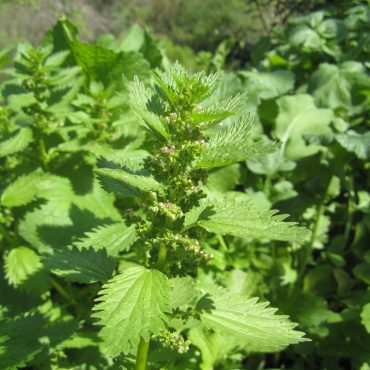Dwarf nettle is a short-lived annual, usually less than 30 inches (75 cm) high, with one to several stems arising from the base. The stems are more square than round, often grooved, and green or sometimes reddish in color. The bright green leaves are paired along the stem, elliptical to oval and usually less than 2 1/2 inches (6 cm) long; the regular scalloping along the margins is characteristic. Leaves contain crystals of calcium carbonate (cystoliths) that appear as tiny bumps on the leaf surface. All parts of the plant have numerous small hairs, the larger of which are sharp, stiff and hollow, with a bulbous base. These hairs act as miniature hypodermic needles. They are filled with a cocktail of histamines, acetylcholine, serotonin, and formic acid. When brushed, the tips are broken and pressure within the hairs forces the chemicals out of the tip and into the skin, causing itching, swelling, and burning.
Flowers are tiny, crowded and difficult to interpret, even with a microscope. Flowers are unisexual. Male and female flowers occur together in short, compound clusters arising from the leaf axils. There are neither petals nor nectar glands. Male flowers are symmetrical with four sepals and four stamens which extend outward when the sepals open; the white anthers provide the only color and make the male flowers easier to spot. There is a rudimentary pistil. Female flowers have two pairs of sepals, the inner being slightly larger than the outer. The ovary is superior with a tufted stigma. Female flowers are compressed and have the appearance of clam shells. The main bloom period in January – April.7
Each ovary produces a single small, flattened seed, protected by persistent inner sepals.

